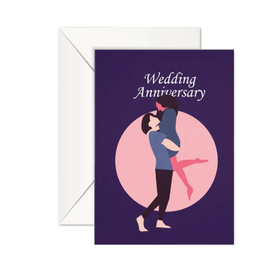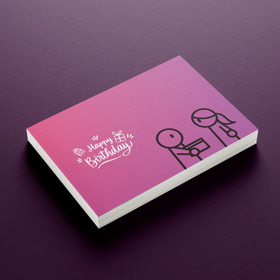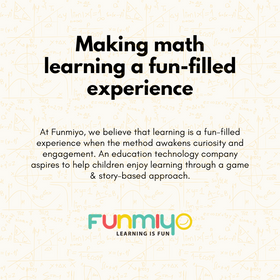on all orders

Flipbook Animation: A Lost Art Form Revived
Flipbooks are easy-to-make books that contain images which transition from one page to another; flipping through them creates an illusion of motion. This type of animation was popularized by early 20th century cartoonists such as Walt Disney and his team. Not only were they captivating for children's entertainment, but also offered adults a window into storytelling with minimalist illustrations.
Today, there is a resurgence in interest towards traditional forms of animation such as flipbooks thanks to modern technology platforms and creative communities online. Through these mediums, old techniques can be shared with new generations who may discover their own potential within this timeless craft. In this article we will explore how flipbook animations have made a comeback, what makes them so special and why they are still relevant today.
Origins Of Flipbook Animation
Flipbook animation has been around for quite some time. Its origins can be traced back to the late 1800s when it was used as a form of entertainment in Vaudeville acts. The basic idea is simple: draw several successive images on individual pages, flip through them quickly and voila – you have an animated sequence!
However, over the years, its popularity declined significantly due to the emergence of more technologically advanced methods such as traditional hand-drawn film animation. Only recently has there been a resurgence in interest towards this lost art form with modern animators using digital tools to create high quality flipbooks.
This newfound appreciation for flipbook animation has given rise to many new opportunities for aspiring artists and storytellers who want to explore their creative talents without needing expensive software or hardware. Flipbook animation gives people the chance to express themselves in a unique way while also learning about classical techniques that are still relevant today.
How Flipbooks Are Made
Flipbook animation is an art form that has been making a comeback in recent years. But how exactly do flipbooks work? Making a flipbook requires specific steps and materials to create the illusion of motion on paper.
The first step involves gathering supplies such as blank sheets of paper, drawing tools like markers or pencils, and a binding device like staples or string. After these items are gathered, it’s time to start sketching. The artist will draw out each frame of their animation on individual pages, taking care to ensure that each one transitions smoothly into the next and encompasses movement within the scene. This process can be tedious but allows for creative freedom when creating characters and scenes.
Once all the frames have been drawn, they are then bound together using the chosen fastening item. When flipped through quickly, the images come to life with their own unique story playing out before our eyes! By flipping at different speeds, varying effects can be created from quick movements to more subtle changes in expression or background detail; allowing for many opportunities for experimentation and innovation within this classic medium.
Flipbook animation is not only a great way to bring stories to life but also offers artists an opportunity to express themselves without needing any fancy equipment or technology – just some imagination and skillful hands!
The Benefits Of Flipbook Animation
Flipbook animation is an art form that has been around since the late 1800s, but it wasn't until recently that its popularity and use in modern entertainment began to rise. Nowadays, flipbooks are used for more than just amusement; they offer a range of creative possibilities compared to other forms of animation. Let's look at some of the benefits associated with using flipbooks as a medium for animation.
First off, one clear advantage of flipbook animation is its cost-effectiveness. Since all that's needed to create a flipbook is paper and pencils, it can be produced much cheaper than traditional methods such as stop motion or CGI animation. This makes it ideal for independent filmmakers who may not have access to expensive equipment or software. Additionally, because the actual process of creating a flipbook isn't too time consuming either, fans of this type of animation can make their own projects relatively quickly - perfect for those on tight deadlines!
The second benefit of flipping books lies in how captivating and personalised the results can be. Unlike digital animations which tend to look fairly uniform from production to production, each individual flip book will carry its creator’s unique style - no two creations will ever be exactly alike! With enough practice, animators can even learn new techniques like adding shading or line work into their drawings while still following the same basic principles. What’s more, when created by hand every frame becomes part of an expression made entirely by the artist themselves - something truly special compared to computer-generated graphics.
In short then, although often overlooked in favour of newer technologies there is still plenty of value in bringing back flipbook animation as a lost art form. Not only does it provide an inexpensive way to animate stories without having access to expensive tools and hardware but also allows creators to express themselves through artwork in ways that simply aren’t possible elsewhere. For these reasons alone we should embrace this resurgence and continue celebrating the beauty found within handcrafted animated films!
Challenges Of Flipbook Animation
Flipbook animation has seen a resurgence in recent years, and it's easy to see why. Not only is it an interesting way of telling stories through pictures but also its unique results can help us explore emotions and ideas we might not otherwise be able to do as effectively with other forms of art. However, there are some challenges that come with this form of animation that need to be addressed before it can truly become the creative force many believe it could be.
One challenge facing flipbook animators is the physical limitations of the medium. Flipbooks require you to draw or paint on each page by hand, making them time-consuming compared to digital methods like computer animation or traditional cel painting. Also, since they are usually made out of paper, they don't last long if exposed to too much heat or dampness which makes preserving longer works difficult.
Another issue for those looking into trying their hand at flipbook animation is access to resources and guidance from experienced professionals who understand how best to use the medium for storytelling purposes. Since flipping books isn’t taught widely enough in educational institutions yet, aspiring animators may find themselves without proper instruction when starting out in this field; however, there are dedicated online communities where people can discuss techniques, share tips and advice and even collaborate on projects together remotely.
Given these obstacles, one must remember that while flipbook animation may have its difficulties it still offers plenty of potential rewards in terms of creativity and expression—and with modern technologies such as smartphones allowing anyone to create their own animations easily now more than ever before, perhaps this lost art form will continue to grow from strength-to-strength in future years.
The Revival Of Flipbook Animation
The revival of flipbook animation is a welcome surprise to many who have long been lovers of this lost art form. While the process can be tricky and labor-intensive, it has made a return as a powerful tool for telling stories in an engaging way.
One key factor that contributes to its resurgence is advances in technology, which allow animators to create more sophisticated visuals than ever before. With 3D printing capabilities, they're able to create intricate designs on each page of their flipbook with relative ease. This makes it easier for them to bring their ideas to life through animation techniques like traditional hand-drawn frames or digital software programs. Additionally, social media platforms provide opportunities for creators to share their work and collaborate with other artists around the world.
The renewed interest in flipbook animation shows no signs of slowing down any time soon, giving rise to new generations of filmmakers who are passionate about preserving this unique medium's legacy while pushing its boundaries further into the future. It’s clear that there’s still much potential left untapped by this form of storytelling, making it all the more exciting for viewers and animators alike.
Digital Alternatives To Flipbooks
As flipbook animation has experienced a resurgence, new methods of creating and distributing the art form have also come to light. Digital alternatives such as online web-based tools or animated GIFs offer creators more control over their work than ever before.
Using digital technologies for animation is not only faster and easier but also allows users to share their creations on social media sites like Instagram, Twitter, and TikTok. These platforms provide an unprecedented level of exposure for artists looking to gain recognition for their craft. Additionally, many websites allow animators to monetize their works through revenue sharing models that pay out based on views or downloads of their animations.
The availability of these digital solutions has opened up flipbook animation to a wider audience than ever before – no longer limited by geography or resources, anyone with access to the internet can now create stunningly beautiful short films in minutes! As this lost art form continues its revival, digital technology provides invaluable support and opportunities for enthusiasts everywhere.
Techniques For Creating Professional Flipbook Animations
Flipbook animation is a unique art form that's been around for centuries. While the traditional use of paper and pencil to create these animations has largely gone by the wayside, it’s still possible to bring this lost art back in a modern way. In this article, we'll be looking at techniques for creating professional flipbook animations.
To start, you need an idea or storyboard plan. It could be something as simple as a character walking across a scene with no dialogue – or something more complex like an action-packed adventure film. You may want to think about camera angles, graphic design elements, and other visual cues when plotting out your animation sequence. Once you have the basic plan down, it's time to move onto production.
When producing your animation, there are many different software programs available depending on what type of project you're working on. For example, Adobe After Effects is great for adding special effects while Autodesk Maya can help with 3D modeling and motion graphics. Depending on how large your project is, you might also consider outsourcing some of the work so that everything looks polished and professional when completed.
No matter which path you choose for creating your flipbook animation, remember that practice makes perfect! Take each step slowly and enjoy learning along the way – soon enough you'll have created something truly remarkable using this timeless art form!
Examples Of Professional Flipbook Animations
Moving on from the techniques for creating professional flipbook animations, it's time to take a look at some examples of what can be achieved. Flipbooks are often seen as an art form that has been lost with time and technology but is now being revived due to its unique style and charm. With talented artists using their skills in this medium, incredible stories have come to life through simple frames and drawings.
The first example we'll explore is 'Death Marches', created by film director Paul Julian. This stunning animation tells the story of a soldier who must confront his own mortality when he embarks upon a grueling journey across hostile terrain. The minimalist sketches capture the emotions of despair and loneliness experienced by those travelling such war-torn paths, providing viewers with an insight into the psychological trauma faced by many during times of conflict.
The next example comes from animator John Kricfalusi whose work on Ren & Stimpy delighted children around the world. His flipbook animation entitled ‘It’s Happy Bunny Time!’ follows two bunnies as they embark on a wild adventure full of humor, music and whimsical characters. It’s clear that Kricfalusi had fun making this movie which perfectly captures the essence of childhood joy and wonderment despite its simplicity.
These examples show how powerful storytelling can be achieved through even basic forms of animation like flipbooks. Whether you're looking for something serious or lighthearted, these pieces demonstrate the potential for creative expression when working with limited resources - proving once again why bringing back this lost art form was so important!
Tips For Getting Started With Flipbook Animation
Creating a flipbook animation may seem daunting, but with some practice and determination it can become an enjoyable pursuit. In this article, we will discuss tips to help you get started on your own flipbook animation journey.
First things first: find the right supplies for the job. This means finding high-quality paper that is thin enough so that each page flips freely when turned. You also want to ensure that the paper won’t bleed through as you draw over multiple pages. Additionally, consider investing in a light box or tracing paper if you do not have access to a computer to create animations digitally.
Second, start by creating simple movements rather than going all out with complicated scenes from the get-go. Aim for small tasks like having an object move across two frames of the book and then build up from there. As you become more comfortable, experiment with different techniques such as overlapping drawings to create smoother transitions between frames, or use varying amounts of lines and brushstrokes to give more depth to your work.
Finally, don’t forget to take breaks! Flipbook animating requires time and patience; make sure that both are respected while working on projects. Taking regular breaks helps maintain focus and motivation throughout longer projects – plus they allow time for experimentation! With these tips in mind, we hope you feel inspired and motivated to jump into your very own flipbook animation project!
If you would like to get custom flipbooks created, check out the collection from Dudus Online.
The Future Of Flipbook Animation
The future of flipbook animation is looking bright. With the resurgence in popularity and its history being rediscovered, this lost art form is sure to be around for years to come. Technology has opened up a world of possibilities when it comes to creating stories with animated characters, but the beauty of flipbooks lies in their simplicity. They don't require any special equipment or software, just paper and pencils - making them accessible to anyone who wants to give it a go.
As technology advances and more tools become available, the potential applications for flipbook animations are endless. We're already seeing creative projects using them as part of larger multimedia works such as video game development, music videos, and even web series. With all these opportunities at hand, there's no doubt that we'll see some amazing things coming out of the genre over time.
Flipbook animation isn't going anywhere anytime soon. For those interested in getting involved in this increasingly popular pastime, try starting small with simple drawings and then work your way up from there. The sky's the limit; let your imagination run wild!
Conclusion
The revival of flipbook animation has enabled animators to re-explore a timeless, classic art form. Flipbooks are relatively easy to produce and offer unique benefits such as the ability for anyone to create their own animations without expensive software or hardware. While there are certain challenges that come with creating professional flipbook animations, these can be overcome by following proven techniques from experienced animators. The future of flipbook animation is bright thanks to its accessibility and potential for creative expression. As long as people continue to explore this lost art form, it will remain an essential part of the animation world for many years to come.
Flipbook animation is an accessible and rewarding form of art making that allows creators to bring their stories and ideas alive in ways only previously possible through traditional hand-drawn methods. With so much potential on offer, it’s no wonder why more and more people are turning towards flipbooks when crafting their animated projects. Whether you’re looking for something new or just want to pay homage to a past craft, flipbook animation has plenty to offer both amateur and seasoned professionals alike.
Flipbook animation isn't going anywhere anytime soon; if anything, its popularity looks set to increase in the coming years as more people discover its undeniable charm. From student films all the way up to Hollywood blockbusters, flipbooks have been used in almost every genre imaginable - proving once again how versatile this medium truly is! So if you're feeling inspired by what's been discussed here today then go ahead and give it a try – you may find yourself pleasantly surprised at just how simple yet effective this style of animation can be.





Leave a comment